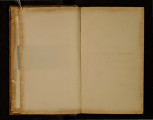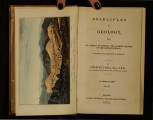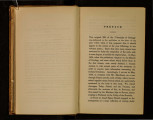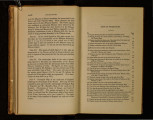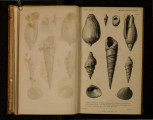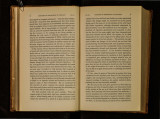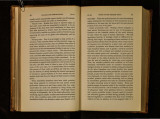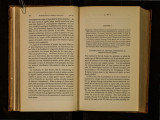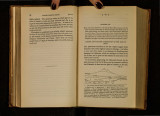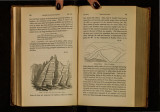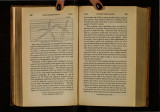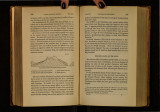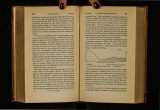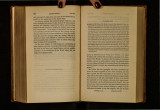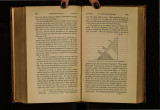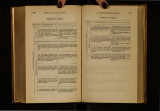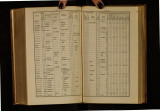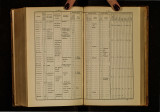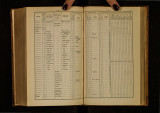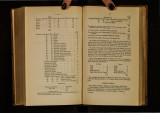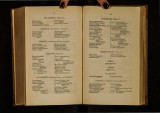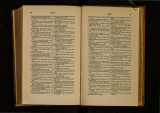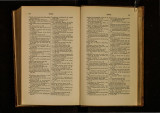| OCR Text |
Show 220 MIOCENE PERIOD. [Ch. XVI. manner as we now find small lakes scattered over our continmts and islands wherein deposits are forming, quite detached from all contemporary marine strata. To determine the age of such groups with reference to the great chronological series established for the marine strata, must often be a matter of difficulty, since we cannot always enjoy an opportunity of studying a locality where th~ fresh-water species a!'e intermixed with marine shells, or where they occur in beds alternating with marine strata. The deposit of the Upper Val d' Arno before alluded to, (p. 161) was evidently formed in an ancient lake; but although the fossil testaceous and mammiferous remains preserved therein are very numerous, it is scarcely possible, at present, to decide with certainty the precise era to which they belong. I collected six species of lacustrine shells, in an excellent state of preservation, from this basin belonging to the genera Anodon, Paludina and Neritina; but M. Deshayes was unable to identify them with any recent or fossil species known to him. If the beds belonged to the older Pliocene formations we might expect that several of the fossils would agree specifically with living testacea; and we are therefore disposed to believe that they belong to an older epoch. If we consider the terrestrial mammalia of the same beds, we immediately perceive that they cannot be assimilated to the Eocene type, as exhibited in the Paris basin, or in Auvergne and Velay: but some of them agree with Miocene species. Mr. Pentland has obligingly sent me the following list of the fossil mammifers of the Upper Val d'Arno which are in the museums of Paris.--Fera3.-U rsus cultridens, Viverra Valdarnensis, Canis lupus, and another of the size of the common fox. Hyrena radiata, H. fossilis. Felis (a new species of the size of the panther). Rodentia.-Histrix, nearly allied to dorsalis, Castor. Pachydermata.-Eiephas ltalicus, Mastodon angustidens, M. Taperoides, Tapir--, Equus --, Sus scrofa, Rhinoceros leptorhinus, Hippopotamus major, fossilis. Ruminantia.- Ch. XVI.) UPPER VAL D1ARNO-CADIBONA. 221 Cervus megaceros, (?) C. Valdarnensis, C. --,new species, Bos, bubalo affinis, B. urus and B. taurus. Cuvier also mentions the remains of a species of lophiodon as occurring among the bones in the Upper Val d'Arno *. 'l'he elephant of this locality has been called by N esti t meridionalis, and is considered by him as distinct from the Siberian fossil species E. primigenius, with which, however, some eminent comparative anatomists regard it as identical. The skeletons of the hippopotamus are exceedingly abundant; no less than forty had been procured when I visited Florence in 1828. Remains of the elephant, stag, ox, and horse, are also extremely numerous. In wintet· the superficial degradation of the soil is so rapid, that bones which the yeat· before were buried are seen to project from the surface of the soil, and are described by the peasants as growing. In this manner the tips of the horns of stags, or of the tusks of hippopotamuses often appear on the surface, and thus lead to the discovery of an entire head or skeleton. Cadibona.-Another example of an isolated lacustrine deposit, belonging possibly to the Miocene period, is that which occurs at Cadibona, between Savona and Carcare. Its position is described in the annexed section, which does not however No. 55. a. Blue marl and yellow sand (older Pliocene). b. Sand, shale and coal of Cadibona (Miocene?). c. Green sand, &c. of the Bormida (Miocene). cl. Chloritic and micaceous schist, serpentine, &c. p~etend to accuracy in regard to the relative heights of the different rocks, or the distances of the places from each other. • Oss. Foss., vol. v. p. 504. 1' Lettere sopra alcune Ossa Fossili del Val d'Arno, &c. Pisa, 1825. |




